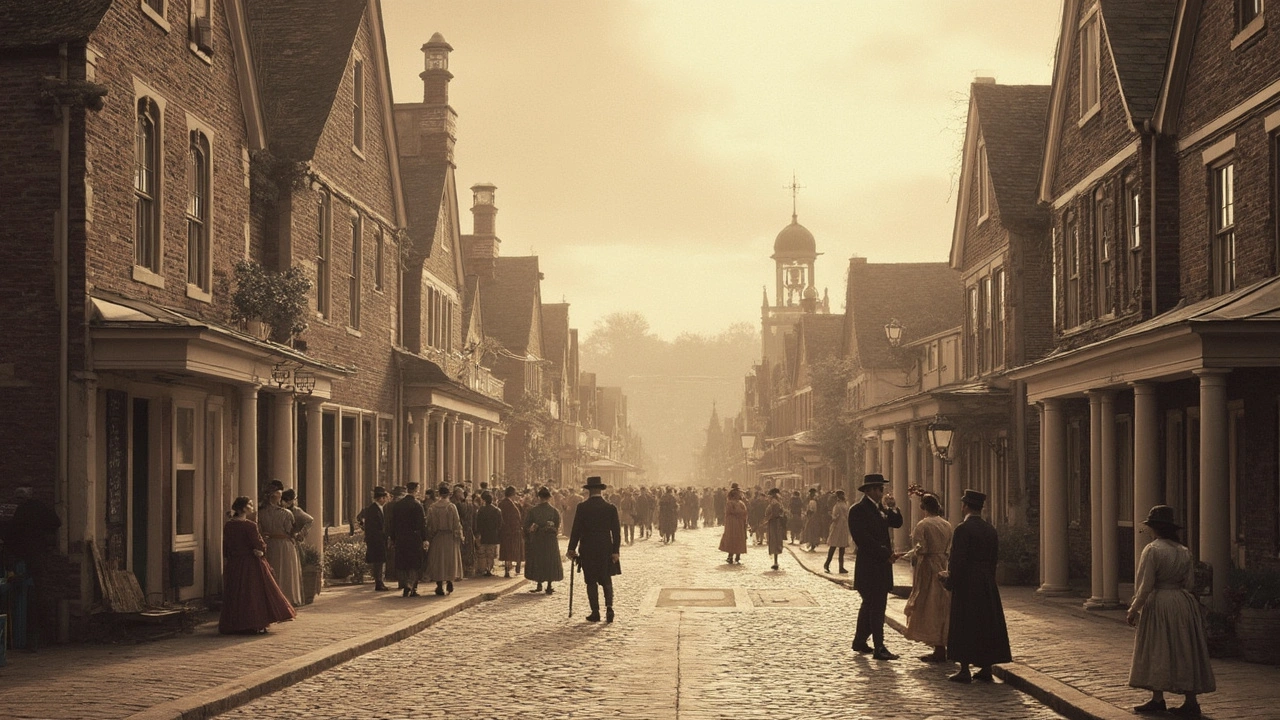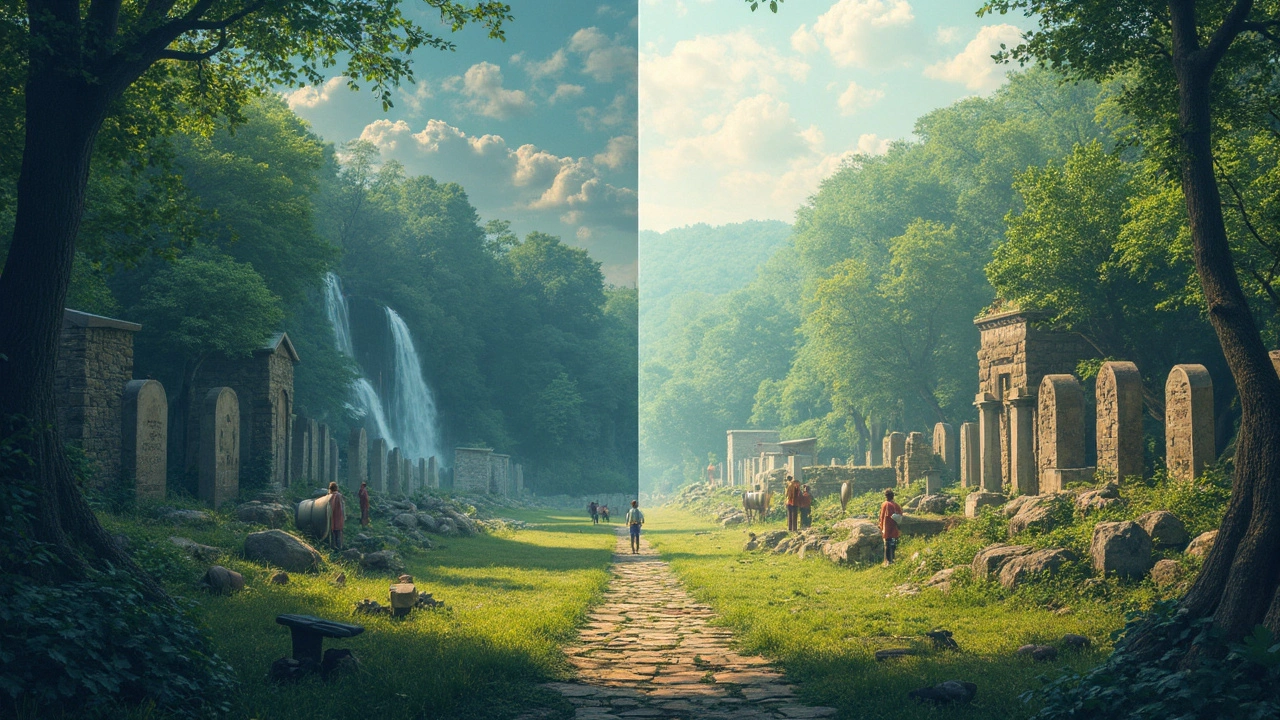Exploring the Difference Between National Parks and National Historic Parks

Ever wondered what's the deal with National Parks and National Historic Parks? They both sound pretty official and, let's be honest, kind of the same. But they're actually hugely different in their roles and what they offer to us as visitors.
National Parks are your go-to places for jaw-dropping natural landscapes. Think Yosemite or Yellowstone, where it's all about the great outdoors. Hiking, camping, and gawking at waterfalls are the main activities here. These parks are wild and sprawling, preserving nature's finest.
Now, switch gears to National Historic Parks, and you’re stepping into the past. These spots are all about cultural and historical significance. Unlike regular National Parks that focus on geology and wildlife, Historic Parks preserve landmarks like battlefields or ancient sites. It's about walking through history with places like Independence National Historical Park, where you can see the Liberty Bell.
- Nature and Recreation in National Parks
- Cultural Heritage in National Historic Parks
- Administration and Management
- Visitor Experience: What to Expect
- Planning Your visit: Tips and Tricks
Nature and Recreation in National Parks
Welcome to the wild side of America! National Parks in the USA are like nature's playgrounds. They protect breathtaking landscapes and offer loads of recreational activities.
Iconic Natural Beauty
When it comes to sheer natural beauty, places like Yellowstone and Yosemite are at the top of many bucket lists. These parks are famous for their stunning vistas, towering waterfalls, and expansive hiking trails. Each National Park is unique, showcasing diverse ecosystems, from the red-rock canyons of Zion to the lush forests of the Great Smoky Mountains.
Recreational Activities
You're never short of things to do in national parks. They're hotspots for hiking, with trails for everyone from beginners to hardcore adventurers. Love water? You can go kayaking, fishing, or swimming, depending on the park. In winter, some parks even offer skiing and snowshoeing activities.
Wildlife Spotting
Keep your eyes peeled! National Parks are also home to amazing wildlife. From bison roaming in Yellowstone to bears in Yosemite, seeing these creatures in their natural habitat is a real treat.
Preservation and Conservation
Did you know these parks are part of a bigger eco mission? They play a crucial role in preserving natural wonders and maintaining biodiversity. Efforts are in place to protect endangered species and maintain the delicate balance of these ecosystems.
How the Time Flies!
According to recent stats, nearly 300 million visitors flock to National Parks annually. That’s a lot of people eager to catch a glimpse of some of the world's most impressive natural sites. But don't worry, it's all expertly managed to ensure both visitor safety and environmental protection.
Cultural Heritage in National Historic Parks
National Historic Parks are like time machines that take you on a journey through America's colorful past. They're all about preserving the sites and stories that have shaped the nation. Unlike the wild beauty of National Parks, these parks focus on human history, telling tales of events and people who've left a lasting mark on the country.
Preserving History
These parks are meticulously maintained to reflect specific historical periods. Take the San Antonio Missions in Texas, for example. It's not just about beautiful architecture; it's a peek into Spanish colonial life. The missions are a UNESCO World Heritage site, and visiting them offers a real insight into how communities lived and interacted with their environments in the 18th century.
Historical Significance
Places like the Boston National Historical Park bring history to life. It's part of the Freedom Trail, linking crucial sites from the American Revolution. Here, visitors can stroll through history, from the Old North Church to the USS Constitution, witnessing a timeline of the fight for independence. Walking these paths is like flipping through a history book, except it’s real life.
Below are some key numbers that highlight the importance of National Historic Parks:
| Aspect | Data |
|---|---|
| Number of National Historic Parks | About 58 across the USA |
| Annual Visitors | Over 12 million |
| Economic Impact | $1.2 billion annually |
Experience History Firsthand
Visiting these parks is more interactive than you'd think. Many offer reenactments and guided tours led by enthusiastic park rangers. Want to see a Civil War battle reenacted or hear stories of courageous revolutionaries? The parks offer programs immersing you in history, making the past relevant and interesting for visitors of all ages.
If you're planning to visit a National Historic Park, consider checking online for any special events or talks. These are often included in the park entrance fees and can make your visit far more enriching.

Administration and Management
When it comes to how these parks are run, National Parks and National Historic Parks take different routes. The National Parks are managed by the National Park Service (NPS), which falls under the Department of the Interior. Their primary goal? Preserve the integrity of natural resources and provide public enjoyment without altering the landscape too much.
Now, the National Historic Parks also come under the umbrella of the NPS. However, their focus is all about preserving cultural treasures and educating the public about them. This often means partnering with local communities, organizations, and sometimes even international bodies to ensure historical accuracy.
Funding and Resources
Where does the money come from? Both types of parks get federal funding, but they also rely heavily on donations and partnerships. Sometimes, specific projects in historic parks receive targeted grants because they preserve something culturally significant.
Staffing and Expertise
There's a big difference in expertise as well. National Parks hire rangers knowledgeable about wildlife and ecosystems, whereas historic parks might employ historians, archaeologists, or cultural experts. This affects the types of programs and tours available to visitors.
For both park types, strong volunteer support is crucial. Volunteers assist with tours, maintenance, and educational activities, adding an extra layer of community involvement.
Visitor Management
| Park Type | Visitor Facilities |
|---|---|
| National Parks | Campgrounds, trails, visitor centers |
| National Historic Parks | Museums, guided tours, historical structures |
National Parks often have extensive infrastructure to handle high visitor numbers. That means lots of trail maps, visitor centers, and sometimes even shuttle services in popular places. In contrast, National Historic Parks might emphasize guided tours and interpretative programs to better connect visitors with history.
Understanding these differences can make your visit more enjoyable, whether you’re chasing a sunset over a canyon or exploring the artifacts from a bygone era.
Visitor Experience: What to Expect
Whether you're hiking through a National Park or exploring a National Historic Park, the experience is going to be unique—and pretty awesome in its own way. Let's break down what you can expect in each.
National Parks: Embrace Nature
When you visit a national park, get ready for a full immersion in nature. Picture this: vast landscapes, wildlife sightings, and outdoor activities that will leave you both exhausted and exhilarated. Whether you're trekking through the wonderland of Yellowstone or marveling at the vastness of the Grand Canyon, nature's grandeur is all around you.
Here's what you can do:
- Hiking and Trails: From easy strolls to challenging climbs, there’s something for every kind of adventurer.
- Camping: Spend the night under the stars with campgrounds available in many parks.
- Ranger Programs: Get insights from park rangers who offer various educational talks and tours.
National Historic Parks: Step Back in Time
In contrast, visiting a National Historic Park is more of a journey through history. These parks are crafted around preserving cultural landmarks and tell the stories of our past. From logging one-room schoolhouses to standing in the rooms where pivotal decisions were made, they give you access to living history.
Expect opportunities like:
- Guided Tours: Many parks offer tours that delve deep into historical events associated with the site.
- Interactive Experiences: Some parks have living history interpreters reenacting past events.
- Museums and Exhibits: Learn through various displays and artifacts, providing context to the significance of the place.
Whether you choose to walk on ancient battlegrounds at a historic site or hike through pristine forests in a national park, each visit promises an enriching experience full of learning and discovery.

Planning Your Visit: Tips and Tricks
Okay, so you’re pumped and ready to explore some National Parks or National Historic Parks. But where do you even start? Here are some practical tips to make your adventure smooth and unforgettable.
Choose Your Season Wisely
First off, think about the best time to visit. Some parks are packed during peak seasons like summer, so if you want fewer crowds and more peace, consider an off-peak time. Fall is amazing for places like Acadia with its leaf-peeping opportunities. Just remember, some parks in colder regions might have limited access in winter.
Check Access and Permits
Not every park is open 24/7. National Parks can have different rules than National Historic Parks regarding access and permits. Popular spots like Yosemite might require a reservation. Always check if you need a permit for activities like backcountry camping.
Plan Your Activities
- Hiking: Know your trail details, and choose according to your fitness level.
- Historic Tours: In Historic Parks, tours can fill up fast, so book ahead if possible.
Getting a map or downloading park apps beforehand is a lifesaver.
Pack Smart
Whether it's sunscreen for sunny hikes or extra water bottles, packing is essential. Double-check the weather. And don't forget your camera—because what's a National Park trip without some epic photos?
Respect the Parks
Always follow the Leave No Trace principles. It's about keeping the parks pristine for future explorers.
Stay Safe
Safety in the wild can't be overstated. Stick to marked trails, carry a basic first-aid kit, and let someone know your plans.
And there you have it, some trusty tips to enhance your park visit, whether you're stepping into nature's wonders or walking through historical sites. Happy adventuring!